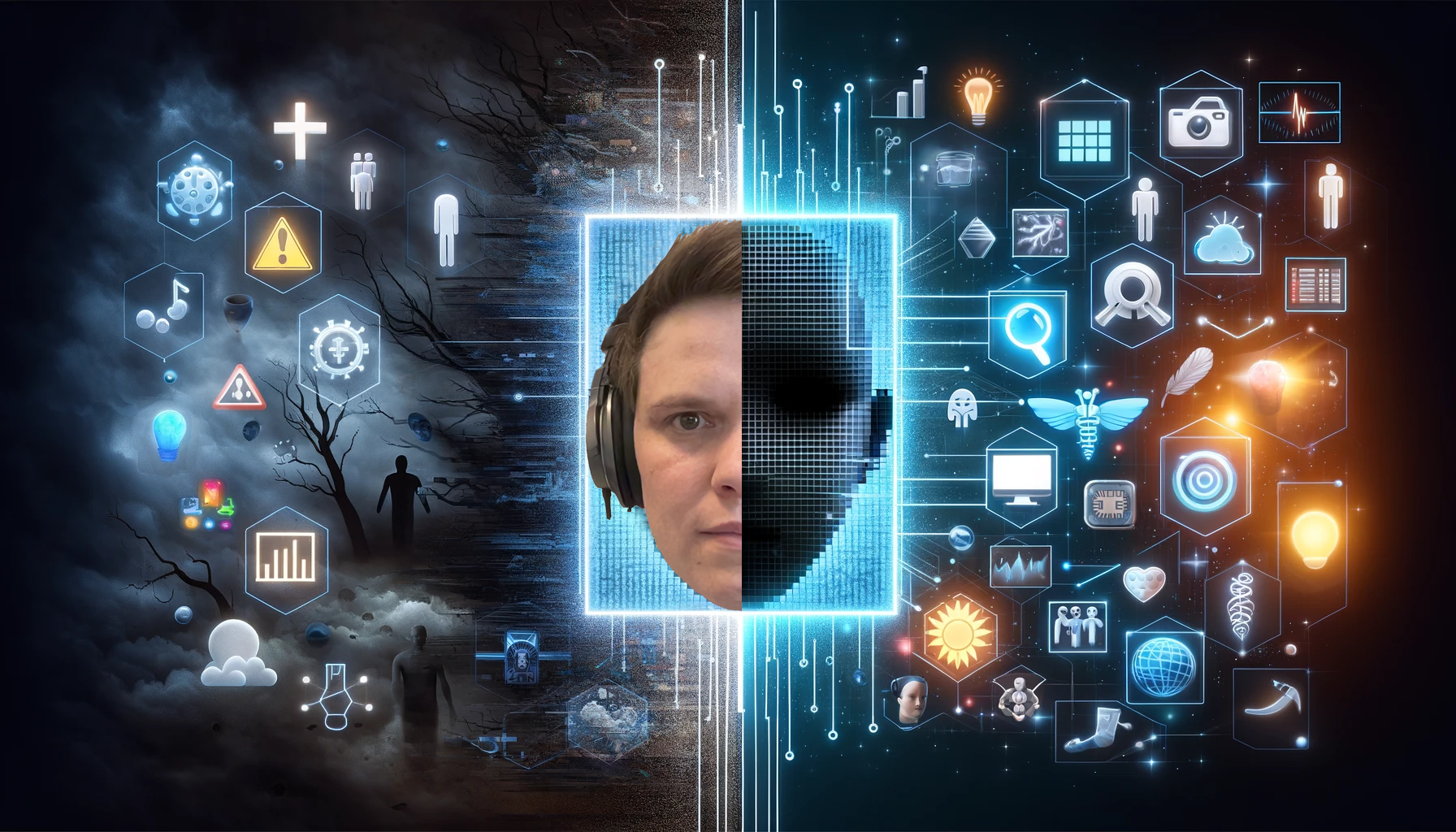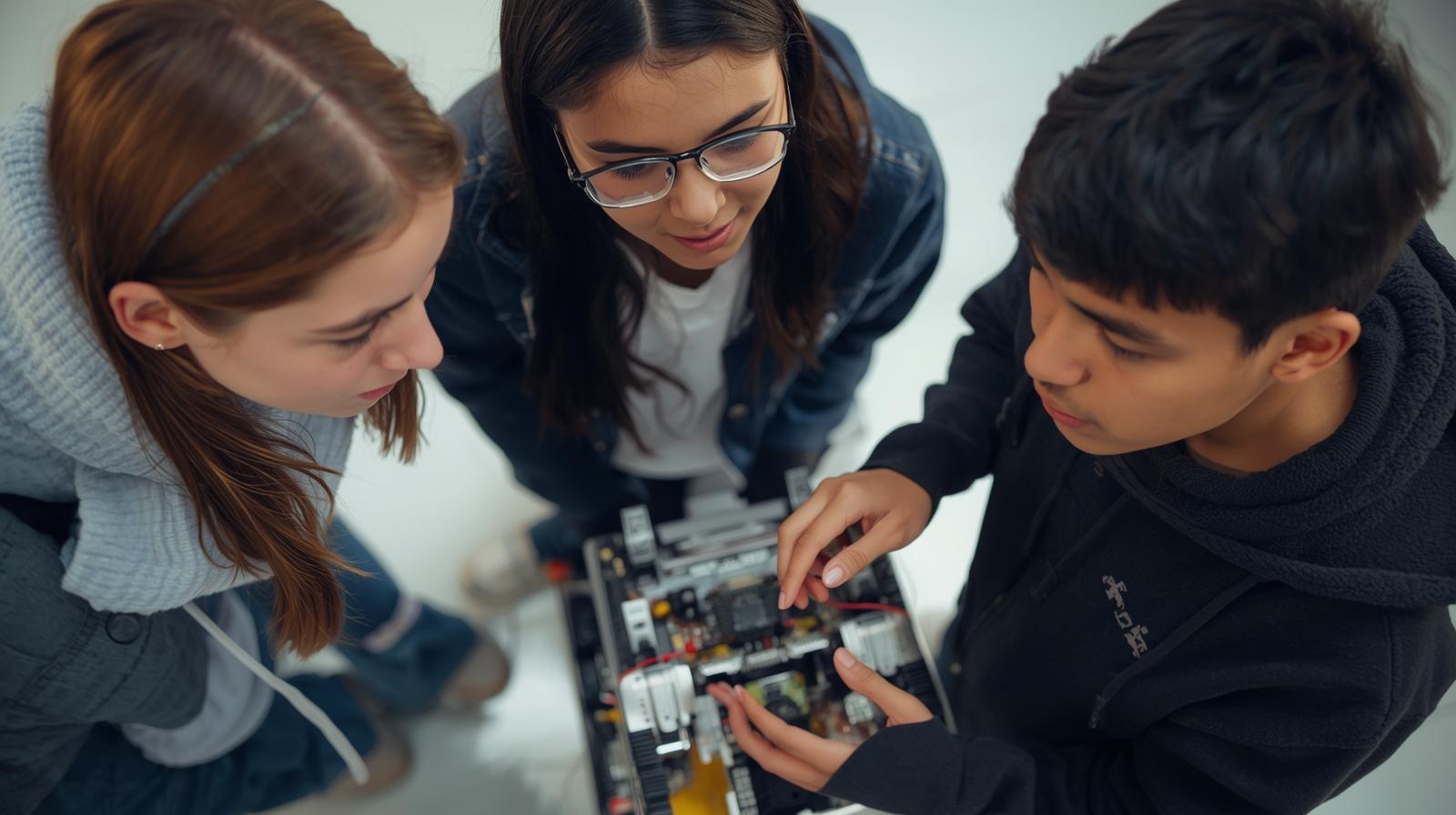What are the Biggest Concerns and Best Benefits about Deepfake Technology?
Understanding the Deepfake Landscape
By Tucker Mahan, MAXX Potential Director of Emerging Technology
- Posted:
- Businesses
Playlist

:12

:12

:16

:19

:12

:20

:18

:19

:15

:17

:12
All content above is AI generated, aside from the blog excerpt. Some translations may be inaccurate but are provided for learning purposes of technology’s current capabilities.
Have you ever needed to be filmed and when you watched the video back you were cringing? I have. With deepfake technology, you could skip the filming and still bring your face and voice to the content that you’re creating – maybe without some of those awkward gestures and mannerisms.
A few years ago, deepfake was a possibility only available to the people who understood what was going on behind the scenes. Now deepfake technology programs make it far more user-friendly though it still requires some technical skill.
So what is deepfake? Deepfake technology uses Artificial Intelligence (AI) to create, edit, modify, and alter video and audio, allowing the image or sound to become more believable and real. This means that technology can now mimic real humans both in image and sound fairly accurately.
Like any other advancement, deepfake tech offers opportunity and concern. While the general population gets a kick out of impersonating famous celebrities, bad actors are tapping into super convincing phishing content, such as vishing (voice impersonation) or smishing (sms impersonation).
With every new capability of deepfake comes the need for smart protection for your company, yourself, and your tech.
Want to skip the read? Allow “Tucker” to narrate for you:
Biggest Concerns in Deepfake Technology
Do bad actors adopt technology like this faster than the general public? It’s possible because most tech advancements take a minute to digest, understand, and determine an action plan.
If bad actors are learning deepfake technology alongside enterprises, it’s very possible that enterprises are still vulnerable to malicious attacks – not to mention social engineering since most people are unaware of this new technology for phishing.
Bad actors are most likely to target people who are unaware of deepfake technologies, meaning that companies, communities, and schools need to start educating people about the possibility of deepfake-based attacks.
When it comes to my biggest concerns for deepfake technology, I see three main categories: misinformation and manipulation; social engineering attacks; and identity theft and fraud.
Misinformation and Manipulation
We often rely on the phrase “seeing is believing;” however, deepfake technology is making it even more difficult to discern real content from fabricated content. I see it a lot on social media where someone will reshare an image, believing the product to be real, and a quick image search reveals that the product is fake. If you look closely, you may be able to spot the AI-generated bloopers in the photo, but it’s becoming harder and harder.
Deepfake technology can already generate celebrity lookalike videos, and now AI-created “virtual influencers” are on the rise. I have more questions than answers on what we’ll see next, but I expect a lot of repercussions in the form of changing copyright laws, lawsuits, and governance acts through these uncertain times.
Social Engineering
Social engineering is all about using what you know or can find out to be able to break confidentiality. Deepfake social engineering attacks elevate the risk because now bad actors can impersonate trusted contacts of their target using voice clone and face swap.
For example, there was a season of time where companies were being targeted by bad actors who were impersonating the CEO to email or text employees, asking them to buy gift cards. The urgency of the text along with the authority of the company CEO likely worked on a lot of people. Deepfake will make these attacks even more sophisticated.
Identity Theft and Fraud
Tech experts warn that deepfake technology could be used by bad actors to bypass biometric authentication in scenarios where a face scan is used. This could give bad actors access to crucial information, secure areas, or devices.
Sumsub published its Identity Fraud Report in November 2023, and it found that deepfakes accounted for most of the AI-powered fraud attacks. In fact, AI-powered techniques were among the top five tools used in fraud online in 2023.
Potential Benefits of Deepfake Technology
It’s up to personal opinion whether or not the benefits of deepfake technology outweigh the security risks; however, opportunity is there for dope advancements. Companies will be able to upgrade their security systems to fight threats, red team detrimental issues, accommodate people with hearing loss, and receive better translations.
I’d break the benefits of deepfake technology into three different categories: Interpersonal, security, and media.
Interpersonal Possibilities
I was at a conference a couple of years ago where one of the speakers was hypothesizing on the potential use cases of deepfake technology, and he presented the idea of using your last saved voicemail of your grandfather with deepfake technology so that you could hear his voice again. That idea seemed super cool, and deepfake could help us remember our loved ones better.
Another company is exploring what deepfake can do for sms, iMessage, and WhatsApp where users could set their chosen language and then all incoming messages would be automatically translated.
Security Measures
Deepfake and generative AI technology can create powerful training grounds for security teams to red team specific situations in order to make security advancements. Companies will be able to better protect their data as attacks become more refined.
We already know that deepfakes have the potential to be used to circumvent biometric authentication security, so it’s important for companies to use this information to find more holes in the security systems.
Media Madness
Channel 1 News shocked people with the possibilities by promising a platform that would individualize news to you. They promise personalization powered by generative AI with its full launch in 2024, think TikTok meets Hacker News.
For content creators, the deepfake possibilities are super beneficial because they could create a deepfake version of themselves that could do their educational content, advertising, and so much more. Again, this sounds great to me, as I’d love to never be in front of a camera again.
Lip sync dubbing will improve so much from deepfake technology. It will be possible for movies in other languages to have actors who appear to be speaking the dubbed language rather than lips that move to the original filmed language.
Recognizing Deepfakes
Spotting deepfakes will become a necessary skill for most people, especially in scenarios where a bad actor could be seeking sensitive information.
When it comes to social engineering, you can have the best security system in place, but if your company and team are not educated on recognizing deepfake phishing attempts, then your company is vulnerable. Train your people.
Some of the best ways to recognize deepfake impersonations are with attention to detail and critical thinking.
- Where’s the emphasis on audio voices?
- Is the pitch variation off from a normal cadence?
- What’s the pause length between words and sentences?
- Does the accent match the person you know?
- Are there odd blinking patterns?
- Do hand gestures line up with the content?
- Are the mannerisms right for the person you know?
People’s voices fluctuate according to the situation. If you’re happy, that adjusts the tone, pitch, and emphasis of how someone speaks. Take a clip of someone who’s happy and use it in a deepfake tool where you’re trying to be threatening, the tone might not match the message.
Humans also quickly pick up on accents from other areas, so a voice clone won’t always match the accent of a person without a large sampling of how they speak. While I’m not a linguist, accommodation within language is fascinating, as it suggests humans adjust their speech to mirror one another in order to inspire better collaboration. Voice cloning isn’t good enough to pick up this nuance.
One of the best ways to recognize deepfakes is to interact with deepfakes in video and audio often. With so much of our day-to-day being in the digital realm, it’s time to realize that all digital content could now be fake.
Conclusion
The possibilities of deepfake are great, and with that great power comes specific responsibility to be smart around deepfake security and use cases.
If you’re not excited about the possibilities of deepfake technology, look it up. I honestly believe that deepfake will bring some advanced attacks from bad actors to our companies, and it’s worth knowing about. Don’t get caught off guard.
Do you think Deepfake is a Threat or an Opportunity? Tell us your thoughts!
Some of My Recent Reads:
- What the heck is a deepfake?
- A Lip Sync Expert Is All You Need for Speech to Lip Generation In The Wild
- Preventing the Harms of AI-enabled Voice Cloning
- AI-created “virtual influencers” are stealing business from humans
- MARLIN: Masked Autoencoder for facial video Representation LearnINg
- DeepFaceLab: Integrated, flexible and extensible face-swapping framework
- It takes a few dollars and 8 minutes to create a deepfake. And that’s only the start
- Make Your Own Deepfake Video in a Few Easy Steps
- 6 ChatGPT Prompts That Feel Illegal — Part 3
MORE POSTS
Alumni Success Story with Jay Spanos, Support Engineer at Synergy Technical
Unmasking Myths About Tech Careers
Inside the Internship Experience and How It Prepares Students for the Future



